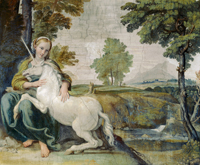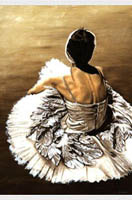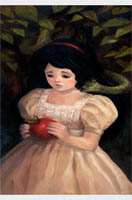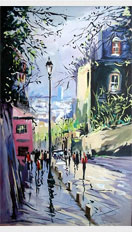Fresco
In painting, the term fresco (pl. frescoes) comes from the Italian phrase buon fresco, ("really fresh") a technical term in opposition to in secco ("on dry surface"). True, or buon fresco, technique consists of painting in pigment in a water medium on wet or fresh lime mortar or plaster. In secco painting is done on dry plaster and with the pigments in a binding medium, like egg. The difference between the two techniques is that the wet plaster as it dries absorbs the pigment and the painting becomes part of the wall surface rather than resting on top of it. This makes a very durable work of art; if the wall is destroyed the painting can often be reassembled because of the size of the plaster parts.
Because of the need to work on freshly laid plaster, careful study of the wall surface can reveal the area worked on in one day. In Renaissance Italy this was commonly called a giornata or a "daily amount." These divisions are perceptible with mild magnification (or even the naked eye if the plastering technique was not good). Andrea Palladio, the famous Italian architect of the 16th century, built many mansions with plain exteriors and stunning interiors filled with frescoes.
Painters in fresco will often add details later in secco.
Egyptian wall paintings in tombs are usually in secco, while the Roman wall paintings at Pompeii and Herculaneum are in fresco.
It is said that, Intonaco (final touch for fresco) is a must removal process if finishing of buon fresco is successful and complete dryness of gionata. Intonaco is basically done in a rougher finish.The excellence of Fresco is seen in the process of calcination of the limestone for its stability which is preserved for the future generation.
A YOUNG LADY AND A UNICORN








